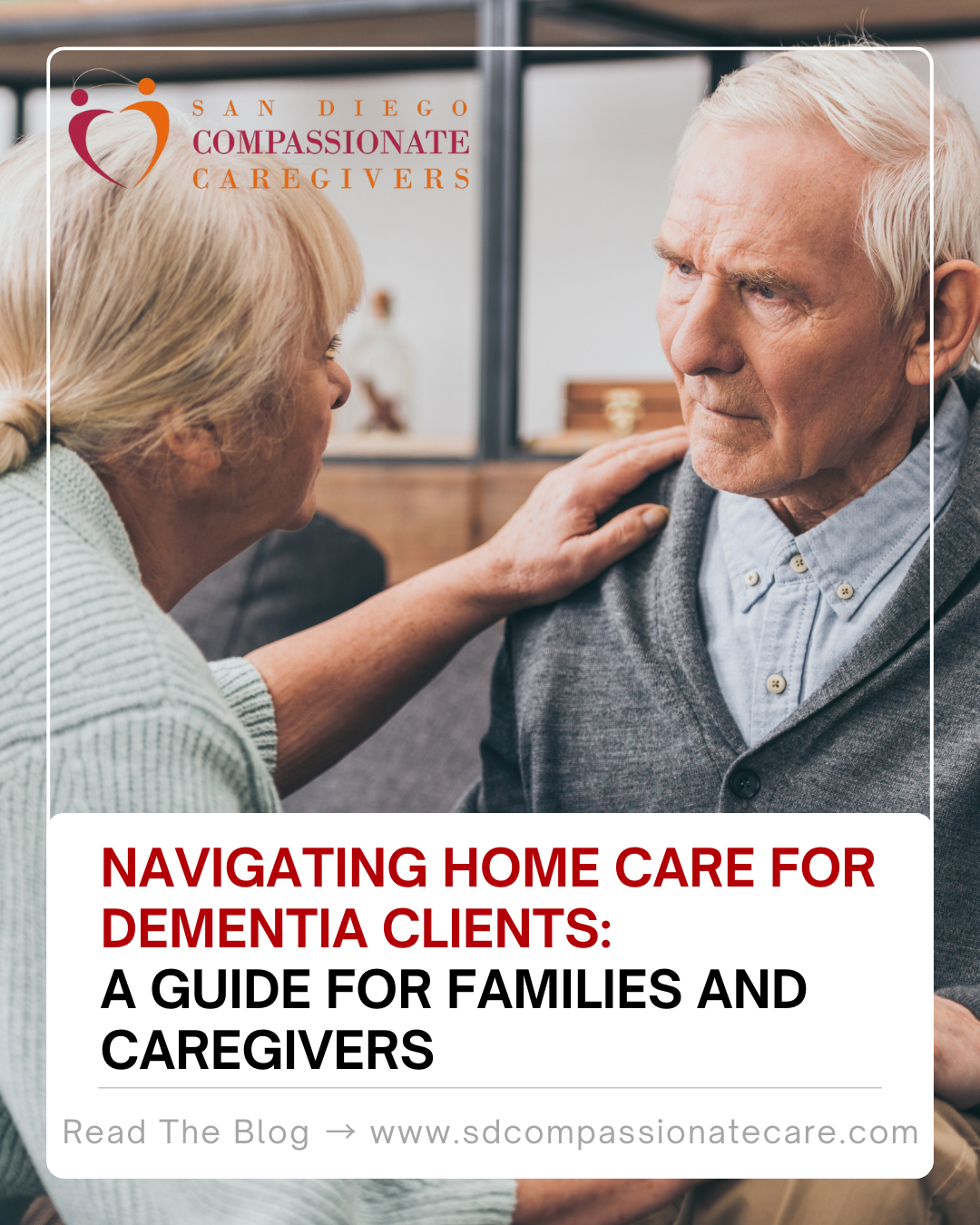Are you interested in learning how to become a caregiver? Before you get started, you need to understand just what the term “caregiver” means. While it does refer to providing assistance to clients, the level of care isn’t the same. Some positions require special training, education, or certification. If you have the desire to help others, the next step is to decide which type of caregiving is right for your skills.
Caring for Seniors
You’ve probably never heard anyone talk with enthusiasm about moving into a nursing home. Aging affects everyone differently and at a different pace. In spite of the growing challenges of being in their own home, most seniors prefer to age in a place that is familiar and comfortable. This sense of independence is very important to them.
A growing number of seniors and their families are making the decision to hire a caregiver to the household. The senior’s needs range from help with everyday tasks to qualified medical care. They have a choice of three types of caregivers to address their loved one’s specific needs.
1. Volunteer Caregiver
If family members are worried about leaving their loved one alone, they might ask a volunteer caregiver to help out. Sometimes volunteers are neighbors, friends, or family members who have available time to spend with the senior. These are often referred to as informal caregivers who volunteer their care without pay. It can also be someone who volunteers their time to various non-profit organizations and hospices to help out without pay. Some of these organizations have training programs that teach volunteers the best way to provide needed care.
Sometimes volunteers are students in social work or nursing programs. Volunteering as a caregiver lets them put their skills to work. Some programs require a specified number of volunteer hours by their students. It’s a great way to enhance the student’s skills while providing a needed service to a senior and their family.
Just make sure you confirm the details of what you will and won’t do as the senior’s caregiver. Don’t put yourself into a situation where you are expected to do more than your time or skills will allow.
If you want to become a volunteer caregiver, it may be as easy as approaching a family who you know needs help. Another option is to find an organization in your area that accepts volunteers.
If you aren’t sure caregiving is the right career choice for you, volunteering is a great way to find out. It gives you a realistic idea of what kind of responsibilities you will face. For some people, learning how to become a caregiver isn’t about the money; it’s about the satisfaction of doing something to help others. For them, volunteering gives them a feeling of satisfaction.
2. Non-Medical Caregiver
Non-medical caregivers typically provide a broad range of services ranging from companionship to grooming and running errands. Although the senior might require medical care, a non-medical caregiver tends to their other needs. You don’t require medical training to work as a non-medical caregiver. But you might require training or certification depending on the state where you live and the agency you work for.
Sometimes family members request the services of a non-medical caregiver to help their loved one do the everyday tasks they no longer can do on their own. Often, family members who become volunteer caregivers face physical and financial hardships. They sacrifice time they would spend with their families, at their jobs, and taking care of themselves to care for their loved one. The more responsibilities they have, the greater the impact will be on every area of their lives.
Hiring a non-medical caregiver for respite care or for regular hours throughout the week can help take the pressure off. The family has the peace of mind from knowing their loved one is getting the care they need. It gives them the break they need without the guilt they might otherwise feel.
Working as a non-medical caregiver is the first level of paid care. Often, you will get paid more for nighttime and weekend hours worked. Your clients might be able to do many of the things they’ve always done. The impact of aging has made it harder to do these tasks without help.
Some seniors suffer from Alzheimer’s or other forms of dementia. The amount of time and the level of care they demand depends on the progression of the disease. Initially, they might require companionship, reading to them, and playing interactive games. Other types of care include giving medication reminders and picking up their prescriptions. As their dementia progresses, they might require help with bathing, dressing, and going to the restroom.
Even those seniors who have little or no mobility prefer the freedom of being at home. They may require a high level of medical care that is provided by a medical nurse. As their non-medical caregiver, your job entails doing household chores, preparing meals, shopping for groceries, and helping with pet care.
You’ll need to know how to become a caregiver in your state. In those states that don’t require certification, everyone doesn’t work through an agency. Sometimes they advertise their services and take on clients independently. This approach to caregiving is often more challenging to the client and the caregiver. A quality agency provides the security, training, and quality control that makes caregiving beneficial to everyone involved. It gives you someone to reach out to when you have questions. A support team helps make you better at your job.
3. Skilled Caregiver
Certified nursing assistants (CNAs) are the highest level of paid caregiver among the three common types. To become a CNA, you must have training in the number of hours required in your state. You must have a high school diploma or GED, in addition to completing a CNA program.
A CNA is not a medical caregiver. They have basic healthcare training that allows them to take blood pressure readings, give partial bed baths, and apply some types of assistive wear like support hose. They can document the patient’s health issues and report changes to the nurses. Even when a state doesn’t require you to be a CNA to become a caregiver, the training is beneficial to you. It helps you do a better job at caring for your clients. It also makes you a more desirable employee for some types of clients.
There are professionals who provide a higher level of medical care to in-home seniors and other patients. These include skilled nurses, therapists, and specialists, and they’re all professionals intended to take care of a patient’s medical needs.
The Growing Demand for Caregivers
If you work as a caregiver and are good at what you do, you will probably be in demand. One reason for this is the growing number of seniors we have in this country. It’s also the fact that more seniors are making the choice to age in place than go to a nursing home.
In 2015, more money was spent on in-home care in the US than on nursing home care for the first time. America is growing gray at a rate that is expected to increase. In-home caregivers have a growth rate of 41 percent, and it is expected to continue through 2026.
How to Become a Caregiver in California
The state of California requires in-home caregivers to have certification. This requirement reflects new laws from 2015 that are designed to protect the caregiver and the seniors they care for. The good news is that you can learn how to become a caregiver and earn your certification online.
Start by finding an online training course which meets California’s 10-hour and 5-hour training guidelines. Present confirmation that you completed the course and passed the exam. Then register your name and training information with the state. This option allows you to complete the course at your own pace without interfering with your current schedule.
Is Becoming a Caregiver Right for You?
For some people, caring for others comes naturally. The majority of those considering caregiving as a career will become non-medical caregivers. This job encompasses a broad range of responsibilities. A good caregiver has more than a few hours of training to pull from. They have some essential traits that make the right for the job.
- Patience – Having a schedule doesn’t always mean that everything will fall into place. Patience is more than a virtue for caregivers — it’s a necessity. Seniors have already lived more of their life than they have left. They have good days and bad ones, and their own way of doing things. When things don’t go as planned, you need patience to help get you through it without over-reacting. If it takes a little longer to get where you need them to go, that’s okay. Remember, you’re there to support them and make their life a little easier.
- Trustworthiness – When you work as an in-home caregiver, you have access to everything in the person’s home. They need someone they can trust not to take advantage of the situation.
- Attentiveness – This trait is really at the heart of what a caregiver does. You need to pay attention to your client and notice if their needs change. Physical or emotional changes can occur slowly or in a matter of seconds. Be aware of their mood, how responsive they are, and what they might need help with.
- Compassion – Be understanding of what the person is going through. Imagine what it must be like to be in pain. Many seniors have a lot of trouble accepting that they can’t do the same things they did just a few years ago. Showing compassion lets them know you understand and shows them they aren’t alone.
- Dependability – Think about what else you have going on in your life. Your clients need someone who puts them first. It isn’t the kind of job that you can call in sick for whenever you feel like taking a day off. If you can’t be there when they need you, then it isn’t the right job for you.
The Benefits of Being a Caregiver
The benefits to seniors of getting to stay in their home include being happier and healthier. That’s something we all want for our loved ones. But there are also some benefits to the caregiver.
Seniors feel a sense of freedom when they live at home as they still have the right to go where they want and do things they enjoy to the best of their abilities. Being a caregiver can give you a greater sense of freedom, too. If you aren’t the type of person who likes sitting behind a desk and doing the same thing day after day, caregiving can offer you more freedom. You have the chance to be active and put your energy and skills to good use.
It’s also a chance to feel challenged by what you do. The situation is never the same. It presents new challenges, leaving you to get the best results from any situation. Seniors rarely stay in the same physical and mental condition over time. It’s up to you to analyze what’s changed and come up with solutions to make things better.
Most caregivers find their careers very fulfilling. Many build close relationships with the people they provide care for. They get close to their families and feel the reward of helping someone live a better life.
If you think being a caregiver is right for you and you have the qualifications you need, submit your application today. If you need to know more about how to become a caregiver, contact the facility that you want to work with. They can provide you with guidelines that they use to hire new caregivers.
If you’re interested in working as a caregiver in San Diego, contact San Diego Compassionate Caregivers. We are always happy to hear from qualified candidates who want to provide compassionate, non-medical in-home care. Ask us how you can make a difference in someone’s life!





